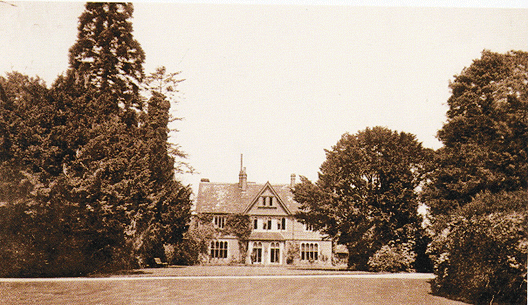
by Joy Horn // Main Photo: The Rectory, 1863-1985: designed by Henry Woodyer, it is now Moat Lodge Senior Living Apartments
Margaret Cunningham (known as Peggy or Peg) lived in the Rectory from 1908, when her father, the Revd. Peter Cunningham, became Rector of St Nicolas church. Her autobiography, All Our Exploring is the source of this account of her experiences during the First World War, which began when she was 14.
She describes her home as ‘a large house – we had thirteen bedrooms – and it was in the neo-gothic style. Of red brick, it had pointed windows and an arched front door with a deep porch.’ This is of course now Moat Lodge, which served as Rectory 1863-1985. ‘Yet this rather palatial Rectory had no bathroom till we came, no electric light or gas, no telephone.’
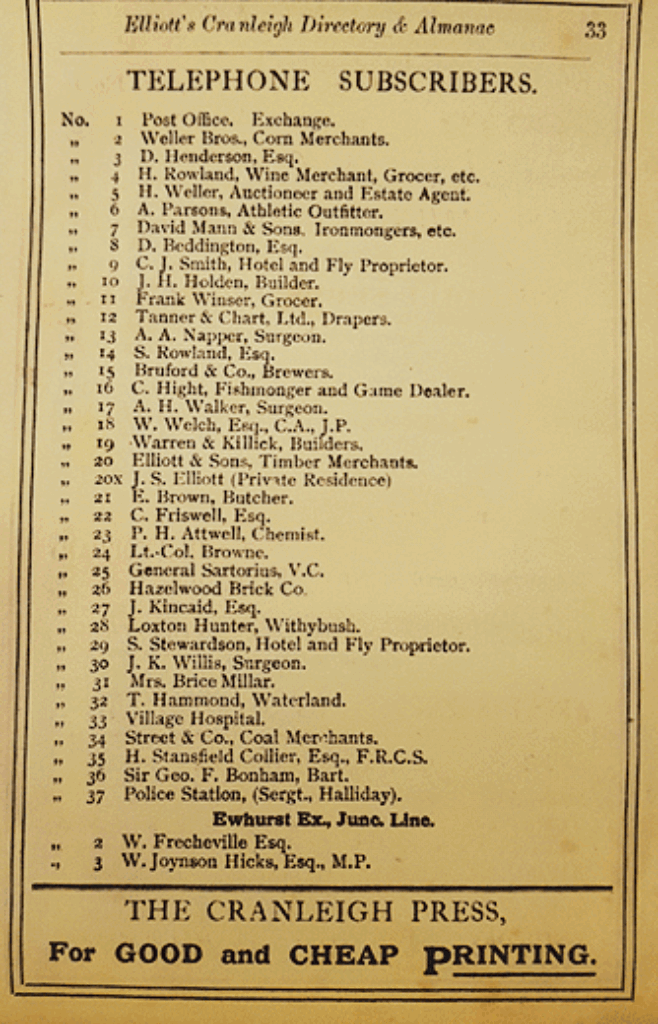
The staff for the Rector, his wife and three children consisted of a cook, housemaid, parlourmaid, governess and two gardeners. By 1914, Peggy was at boarding school in London, but the First World War broke out in August during her school holidays.
She wrote, ‘Lord Kitchener sent out a call for volunteers. Nearly all the young men of the village responded.
‘I have a photograph of them still, being cheered off by a large crowd, in large cars which would drive them to the recruiting office. In the front of the crowd is my father in his clerical black and a boater, I am clinging to one arm wearing a cotton frock and a shady straw hat – the only one suitably dressed for the hot weather – Alan [her brother] is clinging to the other wearing a thick suit with knee-breeches and woollen stockings and the green and red cap of his preparatory school. No one went down the village without a hat. Even the men and boys have either hats or cloth caps on.
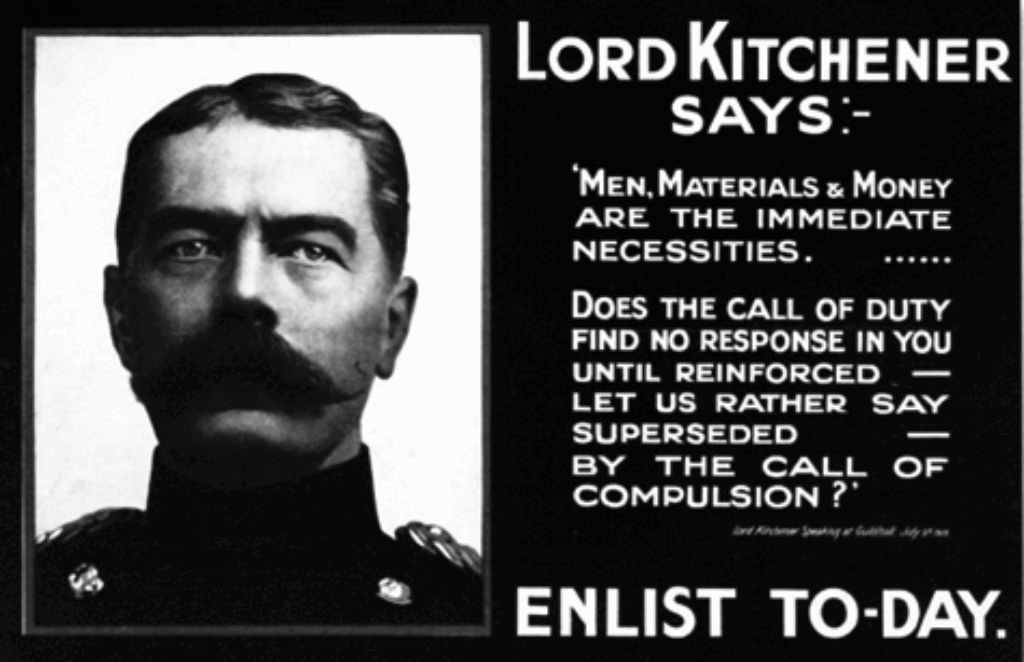
‘I remember my mother packing stores of sugar and other groceries into a cupboard on the top landing. “I never thought I should have to put up war stores”, she said. I don’t think what she had there would have lasted us very long when the crunch came.
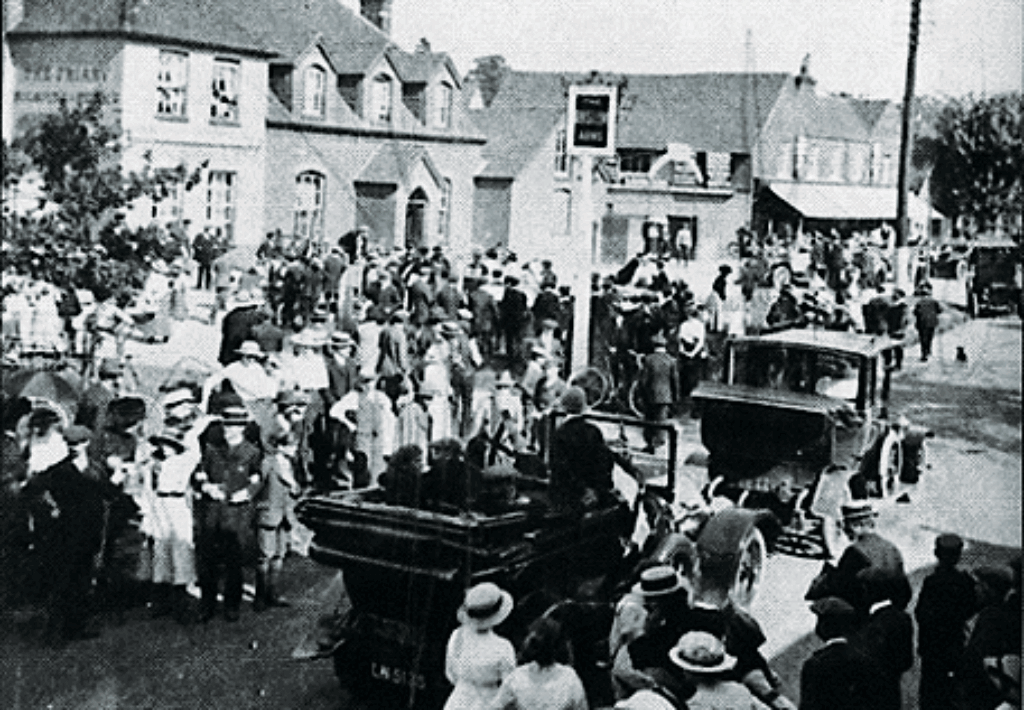
‘Then came swarms of Belgian refugees. Someone in Cranleigh lent them an empty house, money was subscribed, furniture lent and the first families moved in.’ This house was Oaklands in Knowle Lane, belonging to Sir George Bonham of Knowle. Cranleigh School took in some of the older boys. Among those at Oaklands were a ‘very stout’ opera singer, a comedian and a couple with a Russian name. A concert was arranged for them at which the pianist Benno Moiseivitch, who was staying nearby with a friend, performed without a fee.
Peggy returned from school for the Christmas holiday, to find a whole regiment – the 5th Oxfordshire and Bucks. Light Infantry – stationed in the village. The billeting officer had inspected the Rectory and decided that it was a suitable billet for officers, so a captain and a major, with their wives and some of their children, were living there. The captain was the signalling officer of the regiment, and he taught Morse code to Peggy and her brothers. As the boys’ room was above Peggy’s, they used to signal to each other by tapping on the floor with a slipper and a rolled-up blind. The boys used to go out on their bicycles with the captain’s company, to act as spies on their field days. ‘They had a wonderful holiday.’
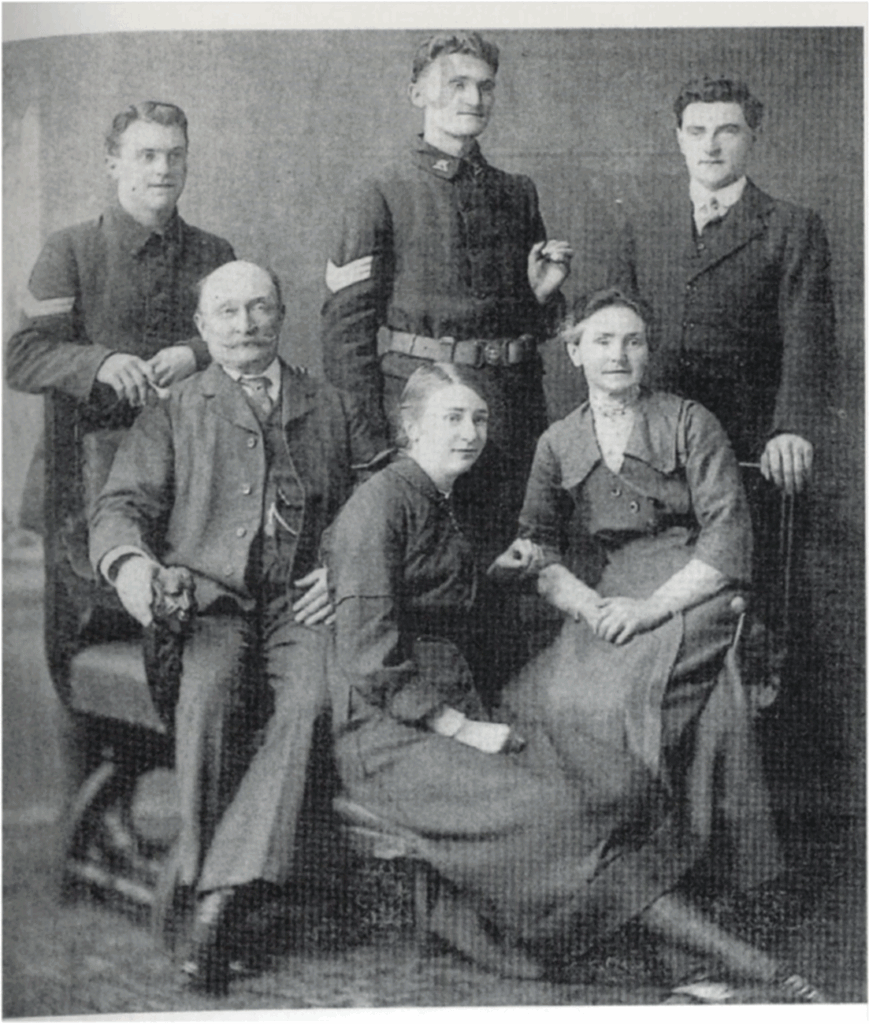
The regiment sometimes went on route marches for miles down country roads with heavy boots and equipment. They sang lustily songs such as ‘Tipperary’, ‘Pack up your troubles’ and ‘Keep the home fires burning’. Meanwhile, the cook and maids had to provide a hot lunch, sometimes at three o’clock in the afternoon, to ravenously hungry men.
‘But increasingly the holidays were saddened by the tolling of the church bell. It tolled almost every day, sometimes almost all day long. One mother lost her three sons all in a week. Our regiment, when it went to France, was decimated, our two officer friends were wounded but survived’.
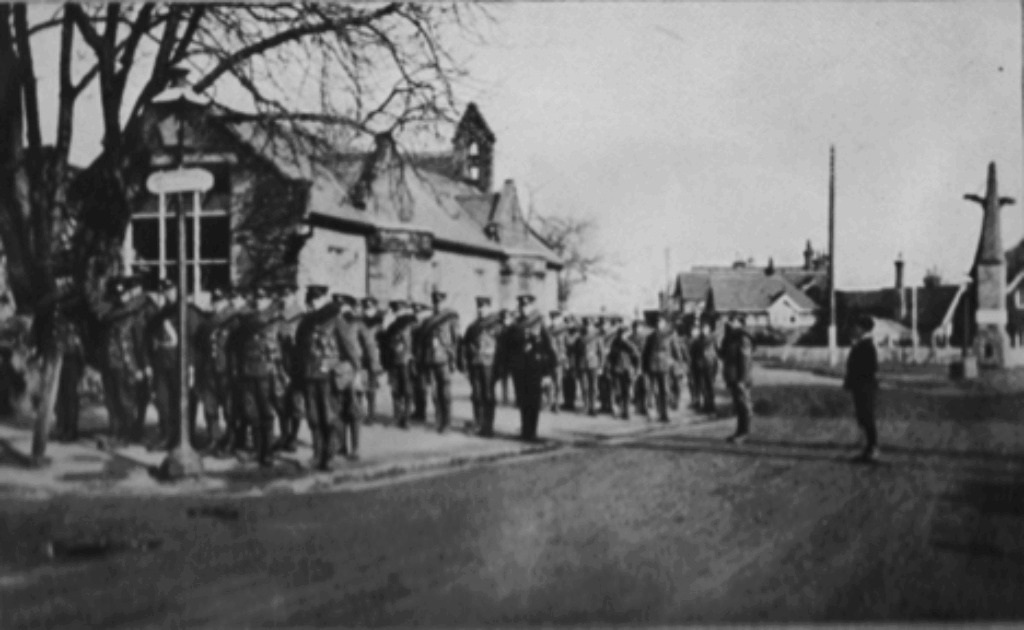
When butter began to be rationed, Peggy’s brother Alan experimented with putting some top-of-the-milk into a glass jar which he attached to the treadle part of their mother’s sewing machine. Although he treadled for hours, with the jar turning over and over, all he achieved was a ‘piece of butter the size of a walnut’.
By the summer holidays of 1917, there was a small Red Cross convalescent hospital at Oaklands where the Belgians had been, and on some days Peggy did ‘general service’ there. This involved a lot of washing-up, laying the table for meals, making the nurses’ beds and answering the front door. She also trained an elderly lady from the village, who had never washed-up before, but had been taking some lessons from her parlourmaid!
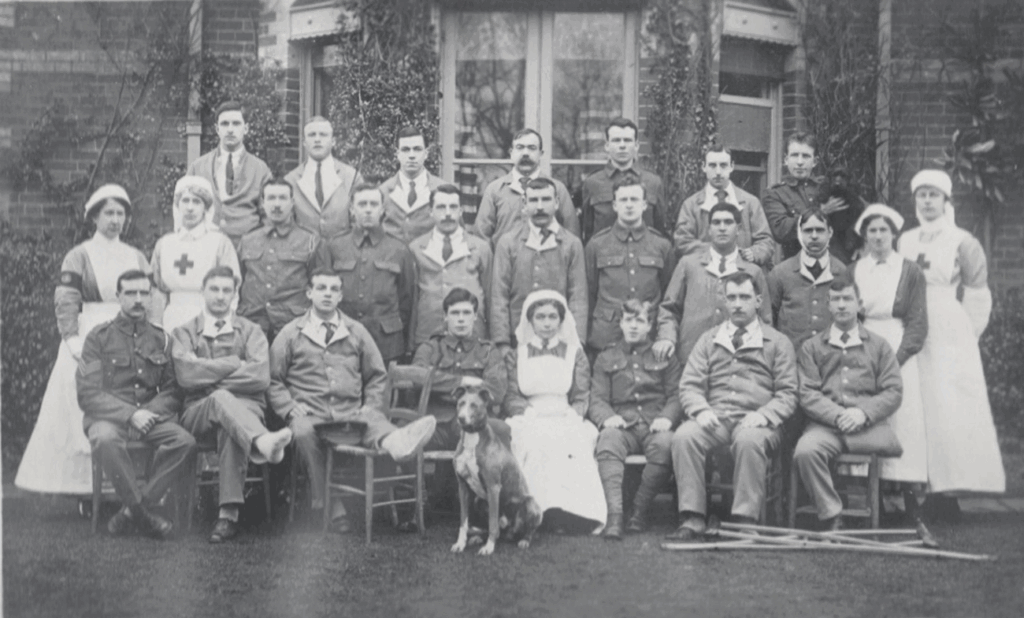
By November 1918 Peggy was being coached for her Oxford ‘qualifying exams’ and was having a maths session when the Armistice was announced. Her young tutor said he would like to run out into the road and sing and dance. He declared ‘he was going to leave all the curtains un-drawn and the lights on in every room that night.’
In 1965 Peggy Cunningham presented the wooden board of rectors which is on the south wall of St Nicolas church, in memory of her parents. She was awarded the MBE in 1971 for work as a prison visitor at HMP Winchester.
(The full manuscript of this autobiography is among the Cranleigh History Society papers, by gift of Peggy’s nephew Andrew.)
The Cranleigh History Society meets on the second Thursday of each month at 8pm in the Band Room. The next meeting is on Thursday February 9th, when Judie English will speak on ‘Baynards – the site and the people’. Visitors are welcome.











